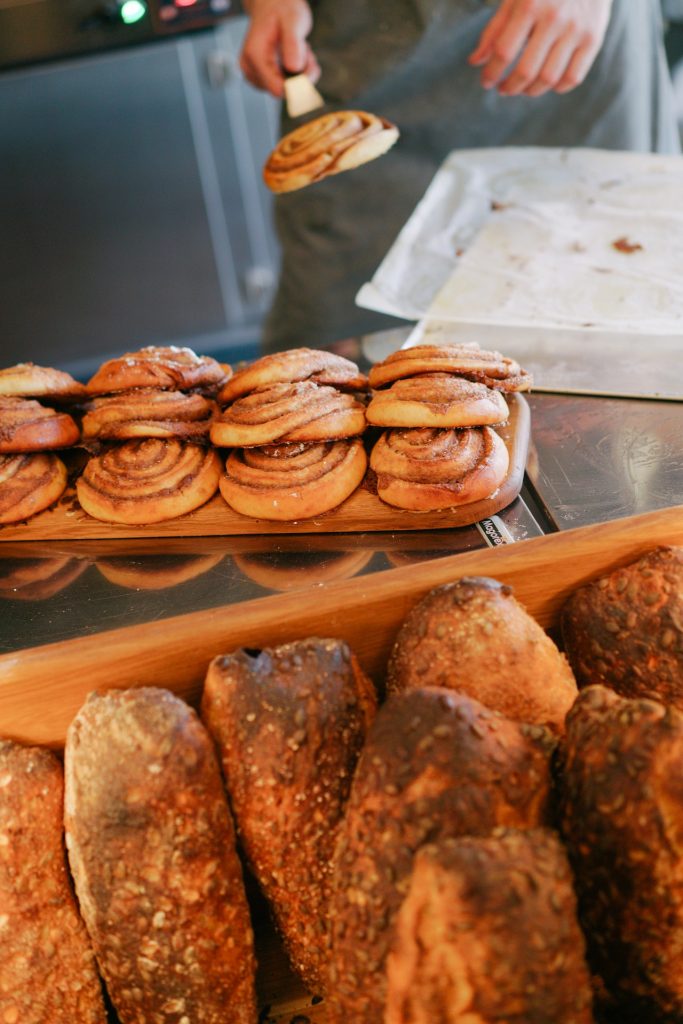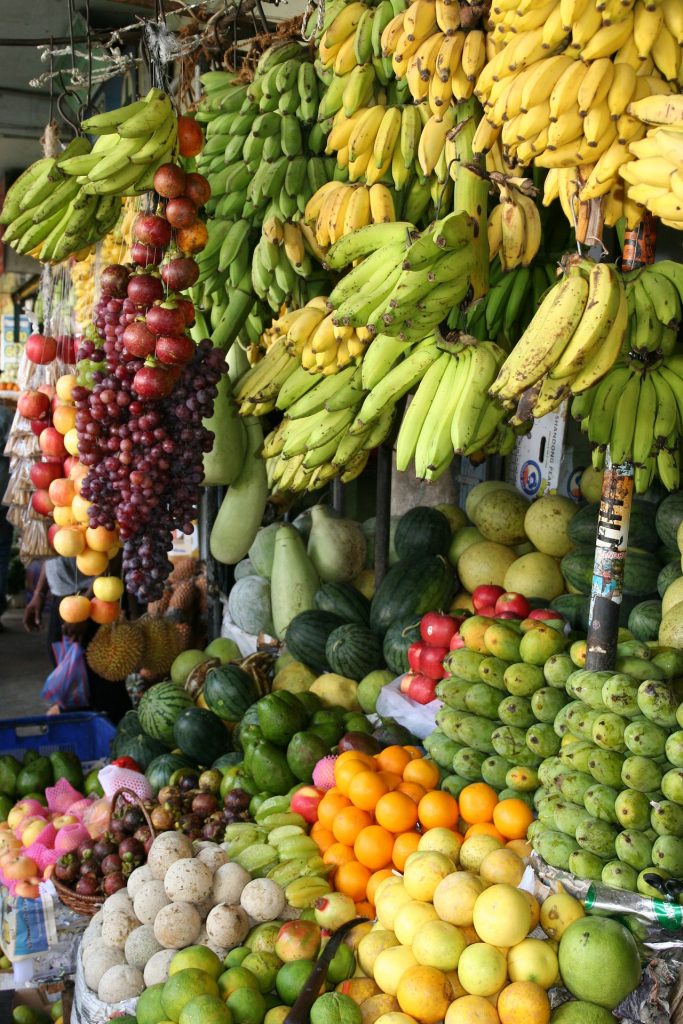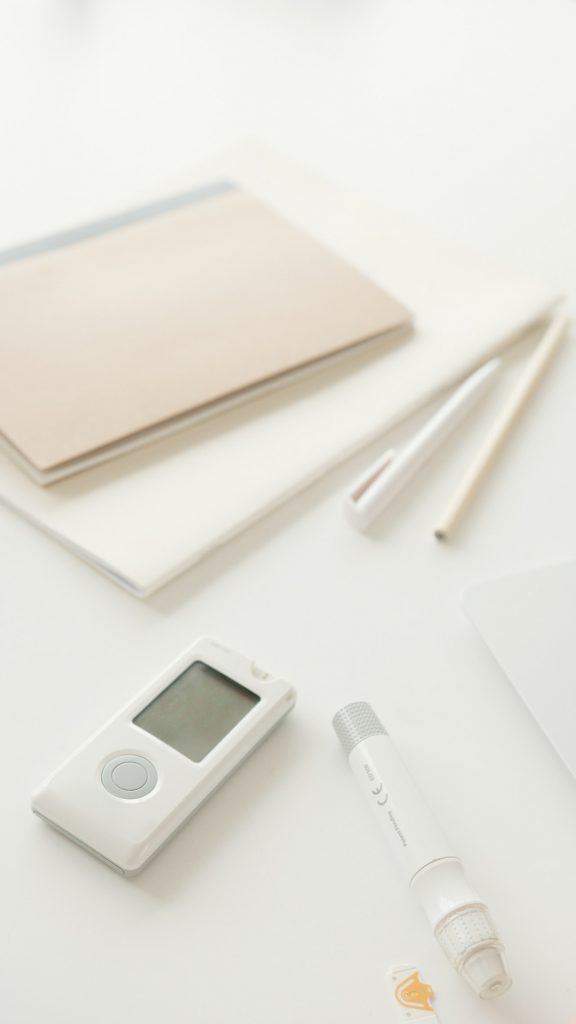You CAN Do This. And I’m Here to Help
“An Ounce of Prevention is Worth a pound of cure”
~Benjamin Franklin
What do you get for that little ounce? Information, Knowledge, and a Plan. It’s a dense little ounce, but it’s less expensive in the long-term.
Benjamin was right!
I would take this a step further. The preventive measure could also be the cure itself!
Who Am I?
My name is Sami.
I graduated medical school expecting to find answers to the most pressing medical questions of our time. I learned a lot and thought I knew everything.
When you think you know everything, you do not know that you are blind.
Everything was wrapped in a neat little package of problem, cause, and solution. However some problems didn’t have a solution. And some problems had unknown causes. It’s as if problems just materialized by magic!
I was blind but I glimpsed discrepancies in the clinics and hospitals that other people could not see.
I had one question that no one could answer,
“How can a person get sick if they are following Doctor’s orders?”
“Well, some people just respond differently to treatment.” A common yet unsatisfying answer.
I found myself disappointed and attempted to see things my colleagues could not see.
With the help of a mentor who practiced medicine with nutrition I eventually arrived at two thoughts:
- There could be answers outside the scope of what I was taught in medical school.
- Nutrition might be able to prevent disease and improve health.
I am fascinated with the impact of nutrition on our health!
I demonstrate how many ways food choices can deteriorate or fortify the human body.
I demonstrate how many ways knowledge of food is hidden in plain sight.
Most importantly, I help put YOU in charge and take control of your health by giving you the means to make educated decisions.
My Best 7 Tips
With that out of the way, I’m happy to share the top 7 secrets I discovered on
my OWN path to preventing hereditary Type 2 Diabetes. Let’s start with #1

Secret #1: Don’t Cut Out Your Favorites
People often think they have to cut out their favorite foods. As if these foods instantly became sinful.
Rice, potatoes, pasta, bread, the list goes on.
But we often have so many childhood memories associated with these foods. It’s impossible to believe that the comfort and fond memories these foods provided us can somehow be “bad” for us.
Comfort food is not the new guilty pleasure. It is the foundation of our childhood. But the hard truth is that carbohydrates can lead to uncontrolled sugar levels in the blood.
Simply cutting out these foods from our diet is not so simple.
There are Superhumans among us that can drop carbohydrates like a bad habit. (Which confuses me because bad habits are so hard break quickly)
But for most of us mere mortals, cutting out these foods will lead to cravings. Cravings will lead to a loss of control and overeating the foods that will worsen Diabetes.
We need to make sure we do well for ourselves without triggering those cravings.
HERE’S THE TIP:
DO NOT CUT THEM OUT. CUT THEM BACK INSTEAD.
Do you normally take 2 cups of rice? Take only 1 cup.
Do you normally have a cup of pasta? Try half a cup.
Do you normally use 2 pieces of bread? Try just using 1 piece.
Cutting back instead of cutting out the staples of our childhood memories will improve your blood sugar levels, give you a satisfying meal, and share more memories with loved ones.
BONUS TIP:
CUT BACK SLOWLY.
Cutting back by half might be too drastic for you. That’s ok.
So if you normally take 2 cups of rice, try 1¾ cup.
Or if you normally have a cup of pasta, try ⅘ of a cup.
Do you normally use 2 pieces of bread? Try cutting off the crust.
Or maybe you prefer the crust? Then cut out the white middle like my father and fill it with the delicious makings of a sandwich.
Making small changes is very important to your success in the long term.
Cut back only a little bit at a time so that the change is easy to adopt in your routine. If you make easy changes, you can make them permanent. You will be able to stack one small change on top of another and eventually build up over time.
Diabetes is a complex disease. Cutting back is not a solution. It is only one part of your tool set. We need more tools in our toolbox.
Good thing there are 7 more secrets to unearth!
Think back on your childhood memories. What does your food mean to you?

Secret #2: Don’t Just Cut Back, Fill Up on Fiber
Cutting out or cutting back on a favorite food leaves a void.
Some say it’s psychological, some say it’s biological, some say there is a mix of both.
Regardless of the cause, the void exists and needs to be filled with a healthy alternative.
Substituting processed carbohydrates for complex carbohydrates is a great start!
Complex carbohydrates are complicated. They do not let their sugars out easily. Your body has to break down the fiber before absorbing the nutrients.
Fiber is like an extended release tablet made by nature. Fiber allows the slow release of nutrients over the course of the day. So you absorb nutrients over a longer period of time.
This is important because it limits the spike of sugar in the blood. Lower spikes in blood sugar mean you get a stable source of energy that does not fluctuate. And no fluctuations means you do not fall asleep in front of the TV when you felt great a moment ago.
Fiber also makes you feel full longer. Because fiber is harder to break down, the body needs more time.
Fiber also makes you empty by going to the bathroom. Without fiber, digested foods tend to overstay their welcome and cause problems in the gut.
Problems include but are not limited to:
- Constipation and/or diarrhea
- Diverticulosis (weak points are created in the gut and create pouches where food gets stuck and can rot)
- Diverticulitis (where infections develop)
- Possible cancer of the colon and/or intestines.
With more regular visits to the bathroom, you lower the risk of colon and rectal problems.
So how do you include more fiber into your diet?
Again, it starts small. Begin with a plan to make small changes to your diet. It doesn’t have to be fool-proof. But the plan has to have your unique signature.
For example:
For every ¼ cup of rice you cut back, replace that ¼ cup with cauliflower rice that you chopped and sauteed yourself with your favorite spices.
For every ⅕ cup of pasta you cut back, replace that with ⅕ cup of spaghetti squash with the marinara sauce you usually enjoy.
For every crust you cut off a slice of bread, try adding an extra piece of lettuce. (Although this completely depends on the sandwich. No one’s ever heard of a lettuce and peanut butter sandwich)
So play with your options. Figure out what is easy to include without much effort and/or thought. And make your old habits more difficult to complete.
BONUS TIP:
Food companies offer “healthier” alternatives but process foods in the same way. This processing might strip away the helpful fiber and leave us with simple carbohydrates again!
So pay close attention to the nutrition facts, consider how the food item was made, and think about how your body will digest it.
What are some creative ways to include more fiber with your favorite foods?
It’s ok if you cannot think of any.
You can always search online for inspiration!

Secret #3: Simple Carbohydrates are Morphing Ninjas!
It’s not just what it’s made of, but HOW it’s made.
People are often surprised to learn that “healthy” foods will still cause high blood sugar levels.
This is because no one is ever taught how to organize their mind around the content of foods or how it is processed.
We need to recognize a processed carbohydrate no matter what form or shape it takes in the grocery store.
MY GENERAL RULE OF THUMB:
If it comes packaged in some way with a nutrition label, it might be processed.
And if it has been processed, pay close attention.
For example, you might see a loaf of bread, but the baker could have easily put the mixture of flour, egg, milk, and yeast into a different baking tray to make bagels.
Another machine would have turned the same mixture of dough into different pasta shapes or tortillas or wonton wrappers.
There might be small variations in the ingredients of the dough for each item, but the idea is that simple carbohydrates in the form of processed flours and sugars can be molded into any shape or size.
The other surprising issue is that flour made from healthy food items like chickpeas or lentils does not necessarily make it better for your blood sugar levels.
Again, it comes down to how the food is processed and how easy your body can absorb the carbohydrates.
Often, these foods are processed to remove the germ (filled with nutrition) and fiber (the slow-release mechanism of carbohydrates) while keeping the simple carbohydrates (creating a quick release into the bloodstream).
My dad often mistakenly believes that he hasn’t eaten a single carbohydrate since the slice of bread a week ago. But he’s had bagels, pasta, breaded fish, different sauces, or even a differently shaped bread since that time.
Developing a watchful eye takes time to practice. My own food selections have changed over the years as I became more self aware and realized how processed carbohydrates have become ubiquitous in our food supply.
You have to open a new set of eyes to recognize them and decide what you want to keep in your diet.
So how do you open your eyes to this world of processed simple carbohydrates?
One could simply turn a blind eye to them completely and either continue to eat them without regard or avoid them completely. The first option usually gets us into the diabetes dilemma and the second option would be difficult for many.
Most of us know that candy, sweets, cakes, and anything sugary falls into this category. That’s easy to identify. But what about the foods hiding in plain sight?
Again if it’s packaged in some way, it will come with a nutrition label which is a great place to start.
The nutrition label can tell you the total carbohydrates and the amount of fiber versus sugar per serving. Each of the ingredients may also be listed.
This helps develop a nutritional awareness of common foods we tend to buy.
Have a look through your pantry. Take some time to examine every nutrition label. Even compare the label of one food item with another.
You will likely find carbohydrates in surprising places. For example, quinoa and beans are known to have high protein. This is generally true. But it also has a lot of carbohydrates.
The goal is not to eliminate carbohydrates from the diet. The goal is to develop an awareness and minimize their impact on our blood sugar levels.
Carbs, carbs everywhere and now we know you’re there!

Secret #4: Fruit has Sugar!
Are you shocked? You are not alone.
“Fruit?! I thought fruit is healthy for you!” – Says the patient.
“Yes. But fruit has sugar which can worsen your diabetes.” – Replies the Doctor.
Fruit is a very confusing topic for most people. Fruit CAN be healthy, but there ARE exceptions based on the type of fruit and if someone has Diabetes or other chronic conditions.
So how will you know what’s good for you? A little education with a lot of experimentation helps you find the answers.
A Little Education
There are 2 important tools you must know about:
- Glycemic Index of different foods is an important tool.
- What is Glycemic Index?
- It shows how quickly the sugars in a food can raise your blood sugar.
- Glycemic Load
- What is Glycemic Load?
- This tells you how much sugar is loaded in a particular food.
So combining these two factors can tell you how much sugar a food has and how quickly it can get into your blood.
A Lot of Experimentation
You can start experimenting with the knowledge you gained. You can even test to see if the established glycemic index agrees with your body’s response to foods! How?
By testing your blood sugar levels before and after eating something.
What happens to blood sugar levels when a person WITHOUT diabetes eats something?
- You will see a peak in blood sugar levels about 1 hour after eating.
- The peak is usually no higher than 150 – 160 mg/dl
- The blood sugar levels will return to normal about 1 hour after the peak.
- Normal range is usually between 80 – 100 mg/dl
- The blood sugar level will dip just below normal for 1 – 2 more hours.
- This is because the body overcompensates slightly.
- The blood sugar level will return to normal.
- This is because the body received the signal to stop making too much insulin.
What happens to blood sugar levels when a person WITH diabetes eats something?
- This person’s blood sugar level usually starts at a higher before eating.
- Sometimes they start higher than the peak of a person without diabetes.
- You will also see a peak in blood sugar levels about 1 hour after eating.
- Of course, the blood sugar levels will be at an all-time high at this point.
- People with Type 1 and Type 2 Diabetes can reach dangerous heights which can lead to hospitalization.
- The blood sugar levels often stay at that peak for a longer period of time before beginning to go back down.
- Diabetes warps the normal physiology of the body so it does not respond effectively to insulin.
- This is known as insulin resistance.
- The blood sugar level may never reach “normal” before the individual eats something again.
- People are often found to have high blood sugar even after sleeping for at least 8 hours.
- The Doctor may consider medication at this point to control blood sugar levels, prevent emergency issues, and prevent long-term problems.
Healthy foods like fruit will cause your blood sugar levels to go up and down. This is a natural process of the body.
The key is finding the foods that will help your blood sugar levels stay nice and even.
No super high spikes. No dangerously low dips.
You can search for “Glycemic Index” online.
But you can make your own personalized glycemic index by recording your blood sugar before and after every food you eat.
You can get the log book below!

Secret #5: You Can Also Fill Up on Protein
People with diabetes often believe that they have to become vegetarians.
Let me point out that even vegetarians can develop diabetes if they don’t know about morphing carbohydrates and fruit.
Yes, cutting back on processed carbohydrates is important. Yes, being careful about “healthy” options is important. Yes, increasing fiber intake is important.
BUT eating bland, raw vegetables for the rest of your life is a mistaken belief!
Diabetes is a disease of imbalance. This means the diet leading to diabetes is often unbalanced.
Therefore, you must rebalance your nutrient intake to rebalance your body. This requires you to look at food and your body in a new way.
How would you build or remodel a house?
- First you would start with a desire to do so.
- You would need a vision of how it would look.
- Then you create goals and a plan.
- You figure out your budget and what raw materials you might need to complete the project.
- Then you set out to do it.
- All along the way you constantly reassess and make sure everything goes according to plan as much as possible.
In the same way, you must consider your body. Your body is already built for you. So if you wanted to remodel your body from the inside-out, what would you do?
- You must have a desire to learn of its inner workings.
- You would need to envision how it would look (at the cellular level since this is where the disease of diabetes takes place)
- You create a plan and goals to help your cells achieve peak performance.
- You budget and find the types of foods you will use to optimize the health of your cells.
- Then you set out to do it.
- All along the way, expect to fall off the wagon. Simply reassess and make sure you get back on track as much as possible.
So what raw materials will help optimize your cell function and make you feel and look good over time?
Protein provides the raw materials to help your body build, rebuild, and remodel. At times, protein can even be used as fuel. But only as a last resort.
People often think protein can only be found in animal products. But protein can be found in a variety of foods including vegetables.
The KEY here is that not all proteins are created equally. Therefore you need a variety of proteins from different sources to supply your body with the necessary nutrition.
Just remember, your body is CONSTANTLY remodeling itself. But YOU need to approve the raw materials it must use.
Granted, you won’t have a chicken breast for your chest. Or a chicken leg for your leg.
The protein of that chicken was broken down to its most basic form, the amino acid, and delivered throughout your body where it is needed most. Some to rebuild muscle, some to create new red blood cells, others will repair skin, the list of uses can go on a long time.
You are your body’s project manager. You decide what your body uses to remodel. What you choose can lead to a robust and sturdy house, or a rickety house that gets old before its time.
Think about the supply store you are using to supply your body for its renovations.
You have the option to use old and rotting materials or fresh and clean ones.
What will you choose?

Secret #6: Make Your Habits, Make Your Plans. Just Like Sherlock Plans
Everybody has heard that you need to diet and exercise. People will even try to appease their Doctor by saying they want to focus on diet and exercise just to avoid starting medication. Often, no real plan is made to put into action outside that room.
That patient will go home to the same life stressors. People are too busy. They need to work, go to school, take care of kids, take care of aging parents, handle emergency situations, the list goes on.
As a result of stress, neglecting ourselves is very easy. Falling back on old habits is even easier. It’s a broken system, but a familiar system. And it gives us comfort to rely on something in the moment even though it might hurt us in the long run.
HERE IS THE KEY:
Decide to make a plan you can follow in times of stress.
It’s easy to think you’re going to do everything right when you’re hiding from life’s problems at the Doctor’s office. So use that time to your advantage.
A Doctor’s office is your safe space. It lets you separate yourself from life’s problems so that you can look at things from a distance.
How did we get to this stage? Poor diet and poor exercise habits.
Thanks Sherlock. We knew that!
We know we need to do better. But it’s the habits that need to be addressed.
- What are our habits now?
- What triggers those habits?
- Do they create the outcomes we desire?
- What habits will help us achieve what we want?
- Are we exercising those habits in our daily lives?
- What small changes can make those habits easier than our old habits?
- What small changes can eliminate habits that do not help us reach our goals?
- What plan can we make to start making those small changes?
- What stressors in life will derail my plans?
- What will I do to get back on track whenever I fail?
- How will I define success?
Bringing awareness to what you want and what might block your way will help you figure out a realistic plan when you’re back in the daily grind.
Everyone has heard of Sherlock Holmes’ famous quote,
“When you have eliminated all which is impossible, then whatever remains, however improbable, must be the truth.” ~Arthur Conan Doyle
I would alter this to read,
When you have eliminated the habits that do not serve you, then whatever habits remain, however improbable, must better serve you.
You must experiment with your habits the way Sherlock experiments with his theories. You must test your habits to see what does and does not serve you.
You may have pre-existing habits that you unintentionally developed. Now you have the self-awareness to design your own habits and see if they work for you.
If not, throw them out. If they do work for you, keep them. If they need to be tweaked to fit your life better, then tweak them.
Do not be afraid to take Sherlock’s approach.
What habits have you left untested?
What habits will help you meet your goals?
Make a list and label them as easy, medium, or hard to implement in your life.

Secret #7: Medications are a Last Resort, But Sometimes Necessary
Your Doctor may decide that your blood sugar levels must be controlled quickly. Or your Doctor might see that you have reached a plateau with diet and exercise.
If you’re not at the goal blood sugar level in either scenario, your Doctor might prescribe medications in order to control your blood sugar levels and minimize risk of complications.
Complications of diabetes include but are not limited to:
- Heart attack
- Stroke
- Kidney disease
- Eye disease
The goal blood sugar level is between 80 – 120 mg/dl.
The goal Hemoglobin A1C for a person with diabetes is below 7.0%.
A normal Hemoglobin A1C level is below 5.7%.
People are often confused about their medications especially if they have to keep track of more than one.
You need to know important information about any medication you start with your Doctor.
- Why am I being prescribed the medication in the first place?
- How does it help?
- How do I take the medication?
- How much do I take?
- How often do I take the medication?
- When do I take the medication?
- What are the possible side effects to look out for?
- What do I do if there are side effects?
- Will the medication interact with my other medications?
- How often should I return to the office to check if the medication is working?
- Will I be able to stop taking the medication?
- What is my goal to control diabetes?
- What is my goal to stop the medication?
That’s a lot of questions! Feel free to add more. But understanding these key elements of every medication will help you keep track of the medications the Doctor prescribes.
Ultimately, you need to know why you are taking the medication and how it will help you reach your goals.
The astute patient will keep track of their medications as well as their impact on blood sugar levels.
So you will want to make sure you are taking all medications as prescribed by the Doctor. Then see if your blood sugar levels have reached the normal range.
There are 3 ways to go from here:
- If blood sugar level is above 120 mg/dl, then the Doctor will get a higher dose of medication for you and/or add another medication.
- If blood sugar level is between 80 – 120 mg/dl, then the current regimen of medication will stay the same.
- If blood sugar level is less than 80, then the Doctor might consider lowering the dose of medication and/or stopping one of the medications.
It’s all about helping your body find the right balance to prevent problems down the road.
Be proactive and rely on a system that helps you keep track of your medications.
You can get a medication tracker below!

Bonus!
Secret #8: Get Feedback on Your Progress with an A1C
You might have heard of a blood glucose test. This is the test that pricks your finger in order to measure the amount of sugar present in your blood.
This is kind of like taking a photo, albeit a slightly painful photo, of your blood. You capture what things look like in an instant of time.
But things change from moment to moment. And the photo you took a moment ago would be completely different if you took another snapshot now.
The present is always different from the past, no matter how far or close to that past reality. So a video recorder would be better.
This is the job of a test known as the Hemoglobin A1C.
What is a Hemoglobin A1C?
Hemoglobin A1C is more commonly known as the diabetes test. But why is this a diabetes test?
To answer this question, there is a basic idea to understand which begins with your red blood cells.
Your red blood cells need to carry oxygen from your lungs to your body. Your red blood cells do this with the help of something called hemoglobin.
The hemoglobin in your red blood cells doubles as a kind of biological video recorder. What do they record?
They record the average sugar level in your blood with full high definition quality. They do not miss a single shot. And this record goes back in time for 3 months before resetting the tape.
So if your sugar levels have been higher than normal for the last 3 months, the hemoglobin in your red blood cells will tell us.
This is important information for your Doctor. Why?
Because your daily photos and your video might not match up!
It’s bizarre to realize. But a photo taken at the same time every day does not give you the whole picture of that day, much less the last 3 months.
So your Doctor will use both tests in order to figure out the best treatment plan for you.
The photo of your blood glucose level before eating should be between 80 – 120 mg/dl.
The video of your hemoglobin A1C should be less than 7.0% for a person with diabetes, and less than 5.7% in a person without diabetes.
The Doctor will help walk you through your results and treatment options.
Addressing diabetes is a 3-pronged approach:
- Diet
- Paying attention to your diet is probably the first and best way to help prevent diabetes. Or if you already have diabetes, diet modification will help minimize the risk of complications.
- Reduce your intake of simple carbohydrates such as white bread, rice, or pasta.
- While reducing simple carbohydrates, you must also increase your fiber intake. This combination will help keep your blood sugar levels more stable.
- Exercise
- Exercise is essential according to the American Heart Association.
- Exercise does not need to be difficult. You do not need to go to the gym to do your cardio or lift weights. You simply need to go for a walk.
- 30 to 40 minutes of exercise such as brisk walking is recommended per day.
- Medication
- If you need a little extra help after doing your best with diet and exercise then your doctor may include medications.
- Medications should be considered as a last resort. However there are times when the severity of diabetes is cause for immediate medication.
- Therefore your doctor may recommend an approach to all three at the same time.
- This depends on your videographer, the hemoglobin A1C. Your doctor may also look at your cholesterol levels, blood pressure, age, smoking history, and others to determine if you need immediate medication.
- Medications may bring down your blood sugar to dangerous levels. So be sure to take your medications as directed by your doctor, and to let the Doctor know of any side effects or symptoms you might be experiencing.
Take time to compare your habits with the 3-pronged approach.
You can also get a tracker for blood glucose and A1C levels below!
You can also learn of the symptoms of low blood sugar so you can speak with your Doctor quickly!
You Can Do This
That’s a lot! You will be overwhelmed. You will fall off the wagon. You will have life hit you from a hundred directions at once.
You will fail and that’s OK.
You have the ability to try again. This time with experience, knowledge, and wisdom.
Click below to get your plan and track your progress.



